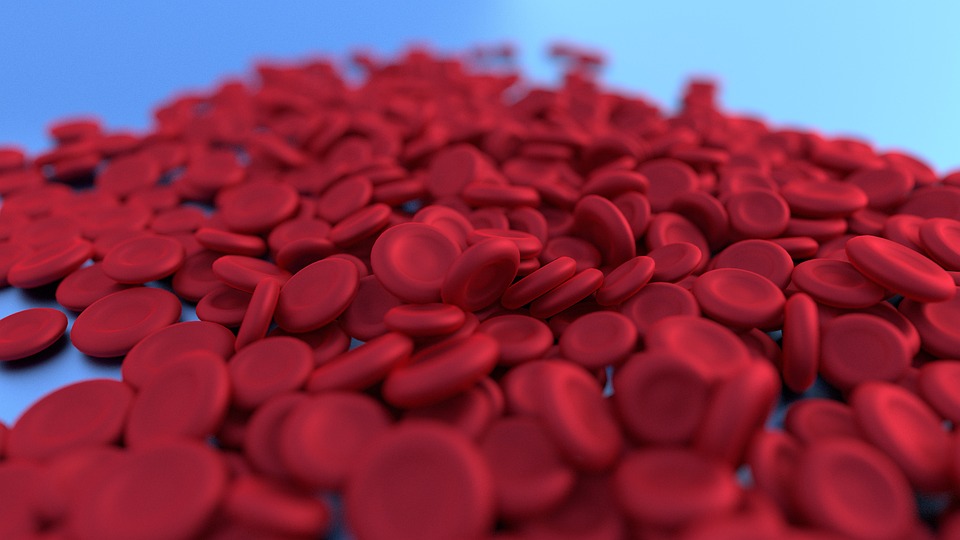Iron deficiency is a condition in which the level of iron in the body is too low. It is also called Sideropenia. Iron is essential for human health, but iron deficiency is the most common nutritional deficiency in the world. This text is saying that iron deficiency is more common in people who live in countries with low incomes. This condition is more common in women and is caused by blood loss during menstruation and pregnancy. It also affects pre-menopausal women, children, and also men.
What is Iron Deficiency?
Iron is an essential nutrient for the body. It is a necessary component of hemoglobin, which is what gives red blood cells their color. It helps transport oxygen through the blood. Iron deficiency affects the delivery of oxygen. This also affects the overall quantity and quality of the blood cells. This condition leads to iron deficiency.
Prolonged iron deficiency leads to anemia. Hence, the term is ‘Iron Deficiency anemia’ (IDA). You can use it interchangeably. According to data, almost 30% of the world’s population suffers from anemia, and a significant part of the population suffers from IDA.
Iron deficiency is not a life-threatening disease. However, it may lead to severe illnesses. For example, it causes fatigue and breathlessness. Other problems that may occur include heart failure. The good news is that you can treat or prevent iron deficiency by eating an iron-rich diet and taking supplements in any form.
A Study on Barriers to Health Workers in Iron Deficiency Anemia Prevention among Indonesian Pregnant Women
Anemia is a problem with maternal health that commonly occurs in developing countries. During pregnancy, a woman will regularly receive checkups to monitor her condition and prevent any complications from arising.
Anemia is a common problem during pregnancy, especially in developing countries. This can lead to negative effects on the pregnancy. Anemia is a condition that contributes to 50% of maternal deaths. A pregnant woman is classified as anemic by the World Health Organization (WHO) if her hemoglobin (Hb) level is less than 11 gr/dl. Globally, anemia in pregnancy is a severe hematologic disorder that affects 32.4 million pregnant women. The World Health Organization (WHO) states that anemia is a health problem if its prevalence is 5.0% or more. A severe public health problem is defined as a situation where 40% or more of the population suffers from anemia. In 2018, the prevalence of anemia during pregnancy in Indonesia was 48.9%; this number increased from 37.1% over the last 5 years. In the Aceh Besar district, the prevalence was 37.1%. This condition is quite worrying and needs further research to be done in order to find a solution. Maternal age, education, family income, religion, number of family members at home, and number of children were all found to be contributory factors to anemia during pregnancy in a study conducted by Woldegebriel et al.
Iron deficiency is a problem that affects many pregnant women and can cause anemia. Iron deficiency is responsible for half of all cases of anemia. If a pregnant woman is deficient in iron, it can lead to health problems for the baby, such as low birth weight or being born early. Iron deficiency at childbirth is linked to developmental delays in children. The mother may feel fatigued, decreased immune system functions, have poor work capacity, and have an increased risk of heart disease and death. Anemia during pregnancy is a leading cause of maternal death in developing countries, accounting for 23% of indirect maternal mortality, according to a new study. Anemia during pregnancy can lead to maternal death, so it must be treated as soon as possible. One of the targets of the Sustainable Development Goals is to reduce maternal mortality so that there are less than 70 maternal deaths per 100,000 live births by 2030.
Preparing for pregnancy and receiving adequate antenatal care is essential for pregnant women. Antenatal care is a program that provides information and support to pregnant women so that they can make decisions about their health and receive services accordingly. Other research has shown that better quality prenatal care and more visits can help prevent anemia during pregnancy. The role of quality antenatal care in preventing anemia cannot be ruled out. During this time, the Indonesian Ministry of Health has been trying to improve the quality of antenatal services provided to pregnant women so that they can have healthier pregnancies.
Currently, the standards for antenatal care that apply in Indonesia consist of 11 procedures that must be met by health workers. There are 11 procedures that need to be carried out, which are: weight measurement, upper arm circumference measurement, blood pressure measurement, fundal height measurement, fetal heart rate measurement, determining fetal presentation, providing tetanus toxoid immunization, providing iron tablets, providing laboratory tests, provide referrals properly, and providing health education.
So far, the general antenatal services provided have not been able to manage anemia in pregnancy as comprehensively as possible. This means that anemia is common and is not decreasing. The reason this procedure cannot overcome pregnancy complications is still unclear. No previous studies have looked at the barriers that health workers see to preventing and managing iron-deficiency anemia in pregnant women. Further research is needed to gain a better understanding of these barriers so that informed decisions can be made to improve the quality of antenatal care and cater to the needs of pregnant women. This study looked at what might be preventing pregnant women in Aceh Besar District, Indonesia, from being able to get rid of iron deficiency anemia.
Discussion on the Study
The study found that health workers faced obstacles in managing problems during pregnancy, particularly with anemia. After realizing that anemia was a problem, they decided that it must be handled. Health workers reported that they did not have adequate facilities or infrastructure to manage anemia during pregnancy effectively. They also felt that they lacked complete clinical guidelines for managing anemia in pregnancy effectively. Previous research has found that a lack of facilities, high workloads, insufficient training opportunities, and learning resources are obstacles to preventing anemia during pregnancy at primary healthcare centers.
The study found that health workers face several barriers in managing and preventing iron deficiency anemia among pregnant women. Health workers often perceive many barriers to providing care for anemia, which can be used as a reference for public health policymakers to make more comprehensive improvements in anemia management in terms of both healthcare facilities and health worker ability. However, there are some limitations in this study. Interviews with health workers will provide additional insights and information. Interviews with policy and decision-makers at the Public Health Center will also help to explore this issue in addition.
The effectiveness of managing and preventing iron deficiency anemia in pregnancy is influenced by factors that actually inhibit its application. So far, health workers have experienced many problems in managing anemia in primary care. These problems include inadequate facilities and infrastructure, incompetent staff, and inhibiting factors from pregnant women and their families. According to our research findings, health providers who give antenatal care to pregnant women, especially in the management of iron deficiency anemia, need better support and fewer obstacles so that the services provided can be more adequate.
What are the Causes of Iron Deficiency?
1. High Iron Requirements
The amount of iron a person needs varies at different stages of life. Periods of fast growth generally have higher needs. Childhood and adolescence are crucial periods of growth. You should make sure you’re eating enough foods that are rich in iron. Additionally, during pregnancy and menstruation, iron requirements increase. When someone has a decreased level of iron, they are at risk for developing anemia.
2. Low Iron Absorption
Some diseases and surgeries may make it harder for the body to absorb iron from food. If the conditions continue, they could lead to iron deficiency. People who have celiac or Crohn’s disease may be at risk. This is because bypass surgery changes the way the body digests food. People who have undergone gastric bypass surgery may not absorb iron because the bypass surgery changes the way the body digests food. Conditions like these may cause the intestine to not be able to absorb iron entirely.
Antacids and antibiotics can interfere with the absorption of nutrients if they are consumed in excess. In addition, studies show that calcium inhibits iron absorption. Thus consumption of excessive dairy products inhibits iron absorption.
3. Blood Loss
If you lose blood, you may become iron deficient and develop anemia. It can occur due to various reasons. It can be caused by blood loss due to injury or menstruation, for example.
It is believed that internal bleeding is caused by disorders such as peptic ulcer, hernia, and colorectal cancer. Women who have a heavy menstrual flow may be at high risk for developing anemia. If you take too many medications, it can sometimes cause gastrointestinal bleeding. Some other ways that blood can be lost are through the kidneys or through blood donations.
4. Diet
Iron found in vegetarian and vegan foods is of lower quality than that found in other foods. In contrast, non-vegetarian sources contain heme iron. Heme iron has a better rate of absorption. This does not mean that vegetarians are at a higher risk, however.
The absorption of iron appears to be affected by several nutritional factors.
5. Vitamin C
It is an essential nutrient for iron absorption. Vitamin C helps the body to absorb iron. This means that not eating enough foods that are rich in vitamin C can lead to anemia.
6. Phytates
Nonheme iron absorption is disturbed by certain antinutrients. Antinutrients are substances that can bind to nutrients and prevent them from being absorbed. Phytates are one type of antinutrient that is found in soybeans, black beans, and lentils. Taking them with iron-rich foods reduces iron absorption. Unrefined rice, cereals, mung beans, and split beans all contain phytate.
7. Polyphenols
They rock nonheme iron’s world by preventing its absorption in the gut. This polyphenol, Tannic acid, is present in tea.
8. Calcium
Although the influence of calcium on iron absorption is not known precisely, experts believe that it interferes with the absorption of both heme and nonheme iron.
Treatment and Prevention
Iron-rich Foods
You may prevent iron deficiency through good dietary habits. Iron-rich foods can help increase the amount of iron in your body. Other sources of iron include leafy green vegetables, legumes, and nuts. Other beneficial foods include green leafy vegetables like spinach and dry fruits like apricots. Nuts, seeds, beans, tofu, and iron-fortified cereals also contain iron.
The body can more easily absorb iron from meat sources than from plant sources. However, antinutrients may also disturb iron absorption. Iron-rich foods and antinutrient foods like tea, coffee, and dairy products should not be consumed together. The following foods contain substances that prevent iron absorption.
Vitamin C is essential for iron absorption. Vitamin C may help the body absorb more non-heme iron, according to some studies. Non-heme iron comes from vegetarian sources. So it is suitable for vegetarians and vegans. You can get your vitamin C from eating citrus fruits, bell peppers, and broccoli.
Iron Supplements
Iron supplements help to increase the amount of iron in the body. You should only start taking these supplements with a doctor’s prescription. These tablets, when consumed regularly, may restore iron levels. You may want to take them on an empty stomach for better absorption. You can safely consume them on alternate days. However, in some cases, they may cause side effects like:
- Nausea
- Stomach pain
- Diarrhea
- Constipation
- Black stools
If you experience any of these, please communicate with the doctor.
Intravenous Iron
Healthcare experts recommend intravenous iron to some patients. This means that you will need them if the stomach’s ability to absorb iron is poor. People who experience side effects from oral iron supplementation can have intravenous iron. Pregnant women who are iron deficient can also take iron intravenously. However, you may require multiple transfusions.
Blood Transfusion
Blood transfusion is for patients with severe iron deficiency. If you are actively bleeding, healthcare professionals will recommend a blood transfusion. The person’s iron content may not improve in the long run.
When to Consult a Doctor?
People often ignore the symptoms of iron deficiency. If you experience any of the following symptoms, you should see a doctor as they may be signs of anemia. If it is not treated, it could cause heart problems, complications during pregnancy, and depression. You should seek medical help if you are losing a lot of blood. You should never ignore skin rashes or pale skin.
Summary
Poor dietary habits are not the only reason for iron deficiency. However, the primary cause of anemia is iron deficiency. Therefore, healthy dietary habits play a significant role. You can improve your body’s absorption of iron by eating iron-rich foods with vitamin C. Diagnosis of iron deficiency is crucial. If you notice any symptoms, consult a doctor. Treatment through supplements should be medically prescribed and monitored.







